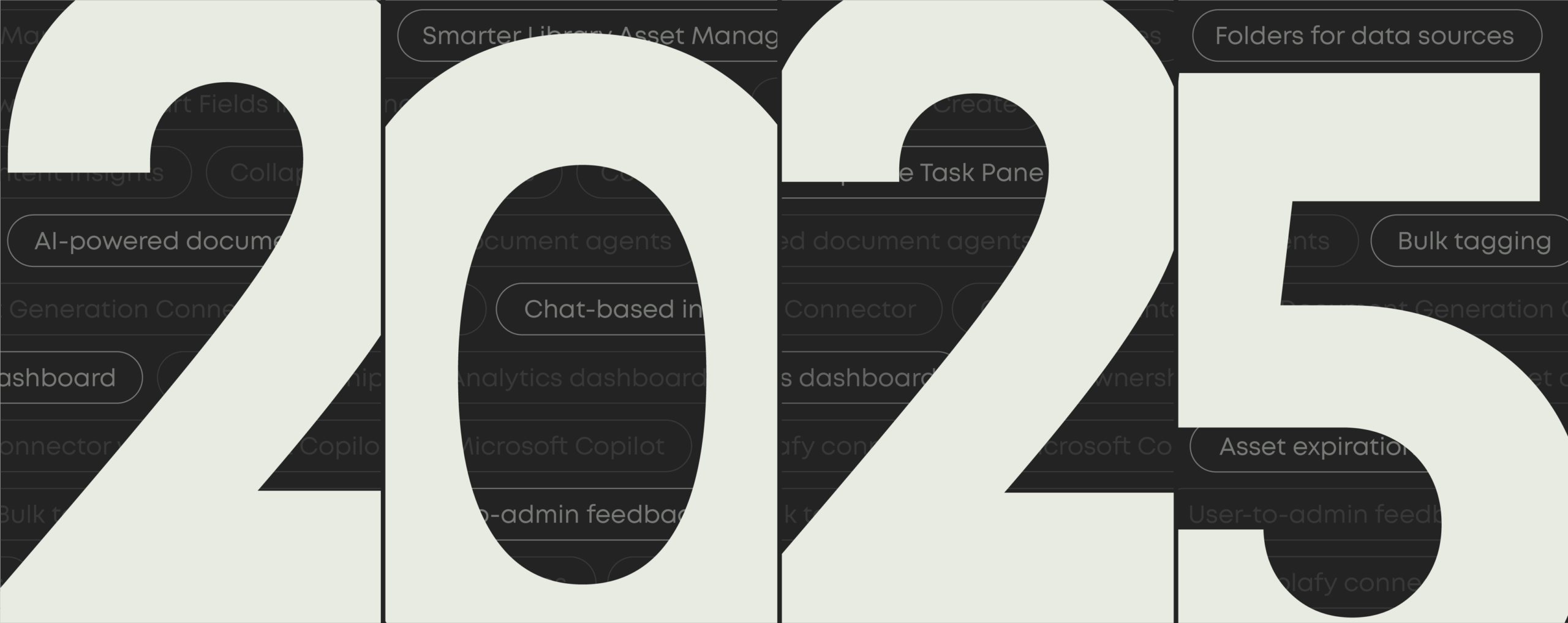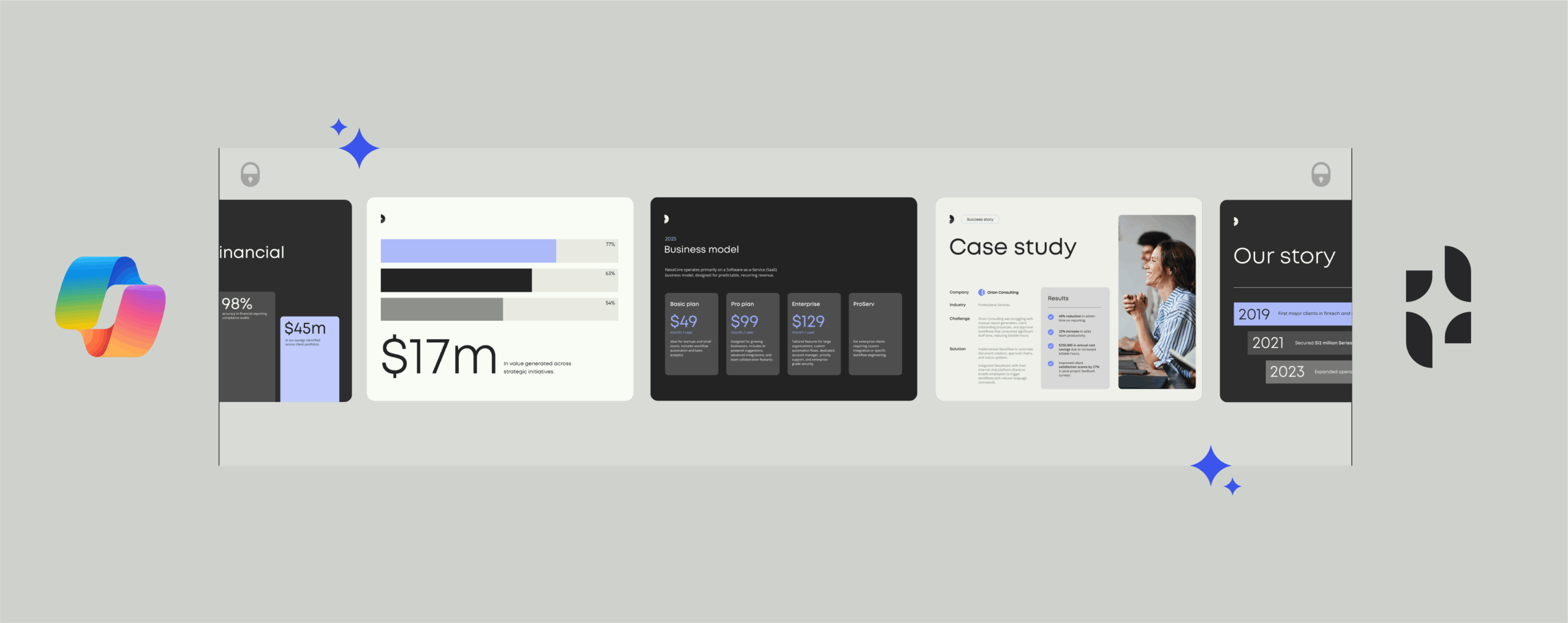How AI agents are transforming document work: An interview with Templafy’s CPO
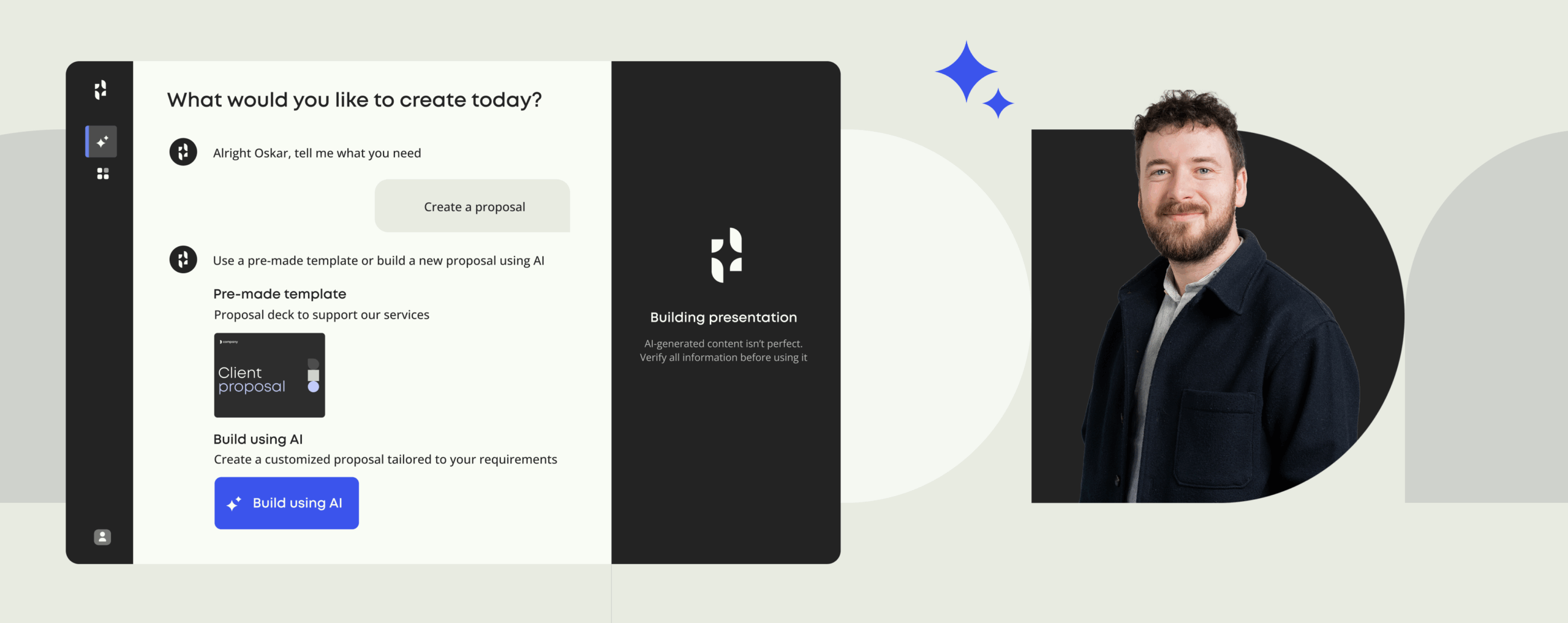
Behind every great presentation or proposal is usually a team of experts.
These are people who know the right templates, understand compliance rules, and can write strong content. But what if that expertise was available to everyone, not just a few specialists?
You might be used to AI tools that answer questions or generate text. Document agents are different. They don’t just create content; they complete tasks. You make a request in a simple chat, like asking for “a sales proposal for Acme Corp,” and the agent acts as a project manager. It finds the right template, pulls approved data, and assembles the document for you, all while following your company’s rules.
Document agents put company knowledge at every employee’s fingertips. By handling the busywork, teams can shift from making documents to focusing on more strategic work.
In this interview, we sat down with Oskar Konstantyner, our Chief Product Officer, to talk about what agents actually do, what inspired this new approach, and how they’re helping organizations scale their expertise to everyone who creates documents.
Let’s start with the basics. For those new to the concept, how would you describe Templafy agents and the main problems they’re designed to solve?
At their core, agents are doing the work you would normally do when creating documents. The end result hasn’t changed. We’re still making documents, presentations, and reports. What’s different is how you create them.
Instead of hunting for the right template, searching for approved content, or figuring out which legal language to use, agents do all that for you. By simply asking for what you need, they find the right template, pull in the right content, use the best AI model, and tap into your company’s knowledge. The aim is to go from an idea to a finished document as quickly as possible within the tools you’re already using.
Think of it this way: agents don’t make things up on their own. Instead, they act on your behalf and can take several steps by themselves to get the job done.
What inspired this shift toward an agent-first approach? What led you to reimagine how people interact with documents?
The real world, honestly. When you think about how someone actually creates a document, you see all the steps it takes. You have to find similar work, locate the right people with the right information, pull in data, and so on. It’s a complicated process with many bottlenecks.
We’re basically recreating what you would naturally do, but with AI handling the coordination. This includes finding the right content and, in the future, connecting with the right people who have the information you need.
That could mean activating another agent inside or outside of Templafy, or whoever is best equipped to help with a specific piece of content, like a whole document or just a single slide that needs a price or product description.
So humans aren’t being replaced, our roles are just changing.
Exactly. We’re moving from being creators to being reviewers and managers. Now, you simply get the process started and the agents take care of the rest. Your job is to check they’re doing what you expected and that the final document meets your standards. It’s like going from being an individual contributor to managing the process.
I truly don’t believe AI is here to replace jobs. It’s here to make us faster and more effective. By taking on the repetitive tasks, agents free people up to focus on strategy and the work that requires a human touch.
Can you share an example of how that works? What’s a common challenge you see customers addressing with agents?
Managing content is a big challenge. Many organizations already have tons of content, both in Templafy and other systems. They need an easy way to find the most accurate and up-to-date content that makes the biggest difference. Instead of starting from scratch, they want to reuse and repurpose good content that already exists.
For example, one customer told us they have around 100,000 slides, making it nearly impossible for anyone to find what they need. An agent can solve this by automatically pulling in the right slides based on what you’re trying to do.
While we put a lot of emphasis on automating high-value documents, many employees also still spend hours creating routine documents manually. We’re helping with these everyday document types that teams create weekly, saving time and effort they can spend on more important work. Agents create the best version the first time and help employees focus on more meaningful work instead of repetitive tasks.
Agents are also powerful because they help people make variations on the fly, like translating documents to other languages or targeting different audiences.
There are a lot of AI document tools out there. What makes Templafy’s approach with agents different?
The key difference is that your organization stays in control. With most other services, it’s up to the user to make sure things are done exactly right. These tools might create something that looks fancy, but it’s not what you want because you want something that’s yours. Something that reflects your brand, follows your rules, and uses your best practices.
I heard a great example recently. A company built an internal tool like ChatGPT where people could use different AI models, but 80% of users always picked the default model, which wasn’t always the best choice. This is exactly the problem we solve. We help users by automatically picking the right tools and methods based on your company’s rules and what they’re trying to do.
Many other AI document tools break your company’s compliance rules. They might create something impressive, but it doesn’t fit your company’s needs. As AI tools become more common, you’ll start to see that presentations made with generic tools all look the same. How do you stand out if your documents look like everyone else’s?
That’s a good point. How do you balance company control with flexibility for the user?
We think of it as a dial you can turn up or down. The goal is to give the user as much help as possible and provide the best output based on the available information. But if that perfect, ready-to-go content doesn’t exist for a certain task, you don’t want the user to get stuck. They should still be able to create the document, just with less automation.
You need one tool that can create all your presentations, not just some of them. Sometimes the result will be amazing because there’s a lot of information available, and sometimes it will just be okay. But that flexibility is key to making sure people don’t have to go somewhere else to get work done and can stay in the tools they’re already using.
ADDITIONAL CONTENT
Embed AI where it matters most—your documents
Discover how Templafy’s document agents work inside Word, PowerPoint, Excel, and Copilot to keep every document accurate, compliant, and on-brand.
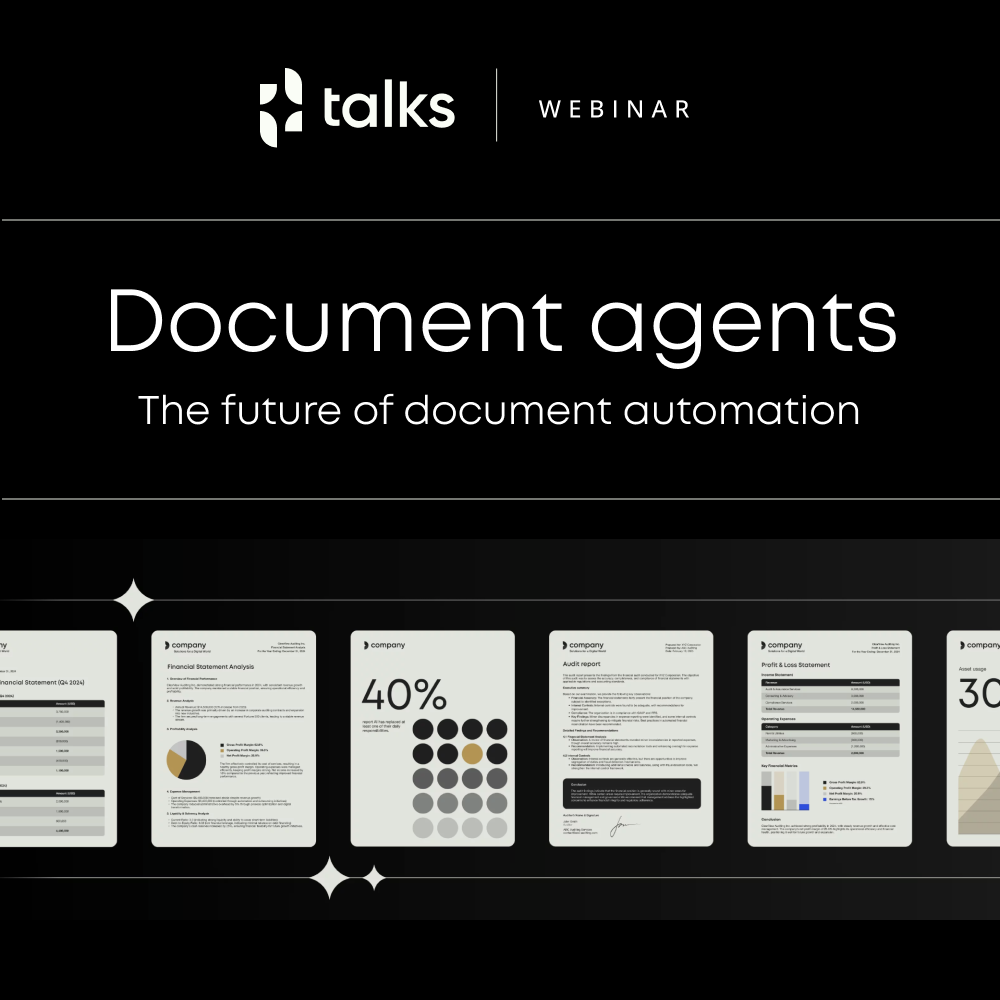
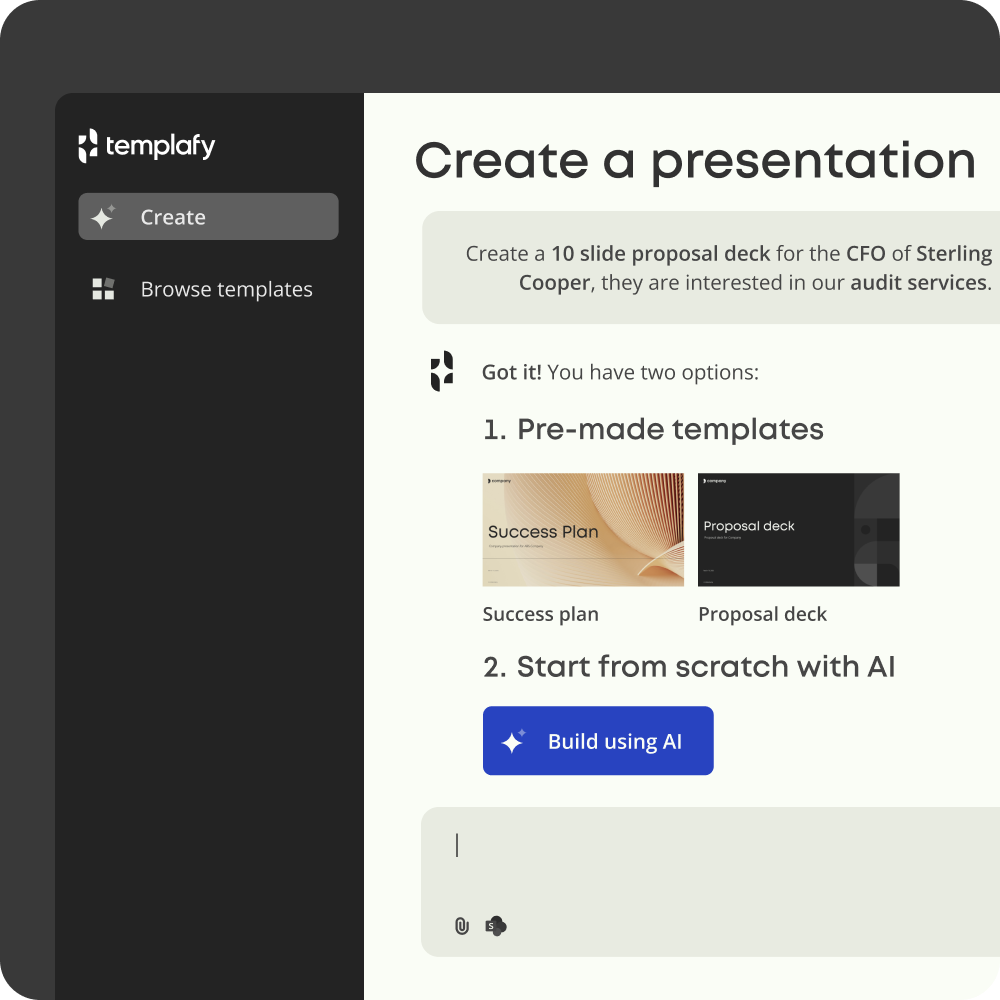
Based on what you’ve seen, how do agents help organizations meet standards for brand, compliance, and quality?
This goes back to applying your company’s best practices automatically. When an agent understands your templates, approved content, brand guidelines, and legal rules, it can make sure every document is consistent.
Rather than relying on employees to remember to use the right templates or legal wording, the agent builds this into the process from the start. It’s about making your company’s knowledge part of every document, not just the ones made by your most experienced people.
What’s the long-term vision for agents, and what’s the most important thing companies should do today to prepare for what’s next?
First, get your AI and data connections ready. Right now, AI in document and presentation work is mainly a productivity tool. It helps humans work better side by side. Documents often look okay but are not great because the content, structure, and data connections are not fully there yet.
As those connections improve by linking to the right data, AI models, and experts, whether human or AI agents, humans will play less of a hands-on role and move more into reviewing and managing the process.
It is not quite common yet to see AI fully creating a presentation without any human input, but that will come. To get there, organizations need to prepare their data and AI infrastructure so the AI can truly understand context and produce useful content.
The goal is to help humans shift from being individual contributors to becoming managers of AI agents, overseeing and guiding their work to create high-quality documents.
The future of document creation in business isn’t about AI replacing human expertise. It’s about using AI to ensure best practices are always the standard.
Templafy’s agents make this possible by turning your organization’s unique knowledge into a reliable, scalable tool. This frees your teams from routine document work, allowing them to focus on what matters most.
Ready to see how agents can transform your document workflows? Book a demo to learn more about agents and discover how to turn your organization’s expertise into scalable, intelligent document creation.


